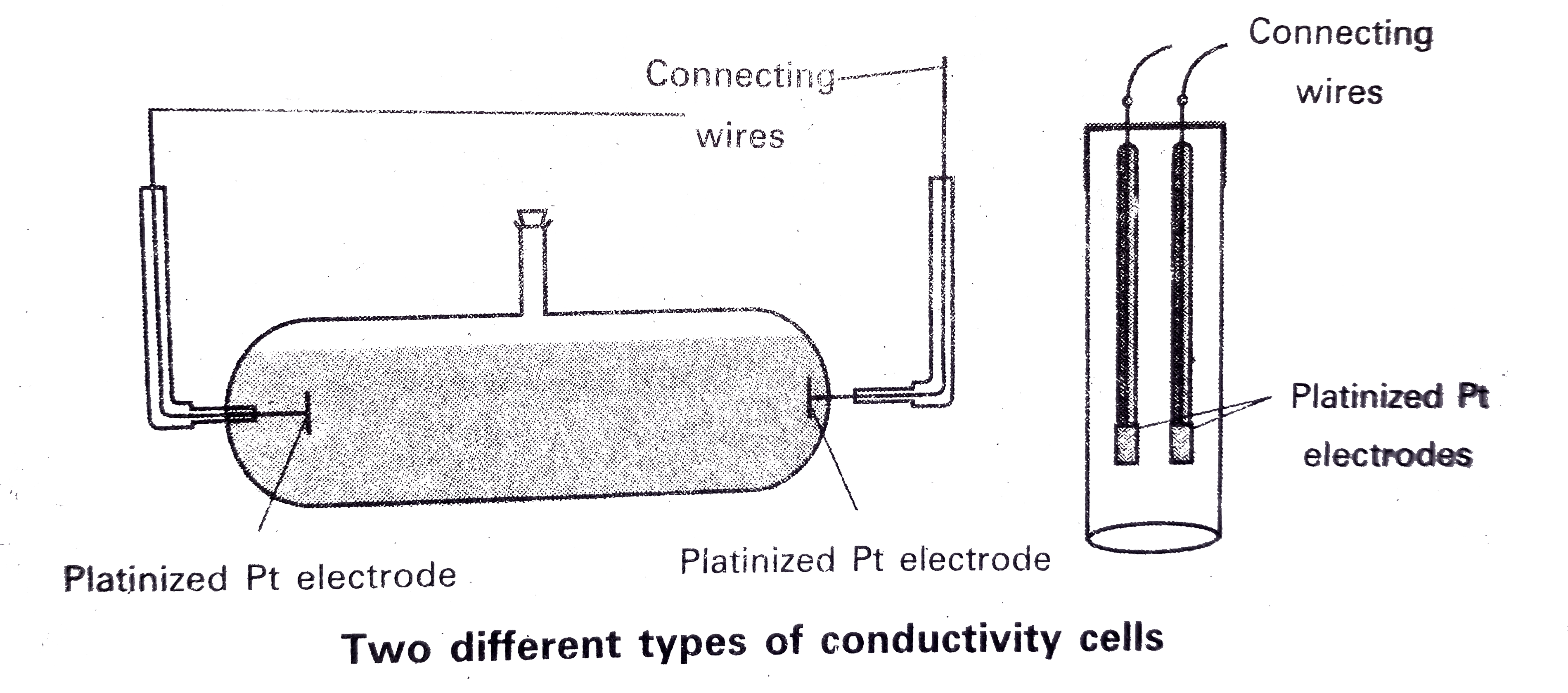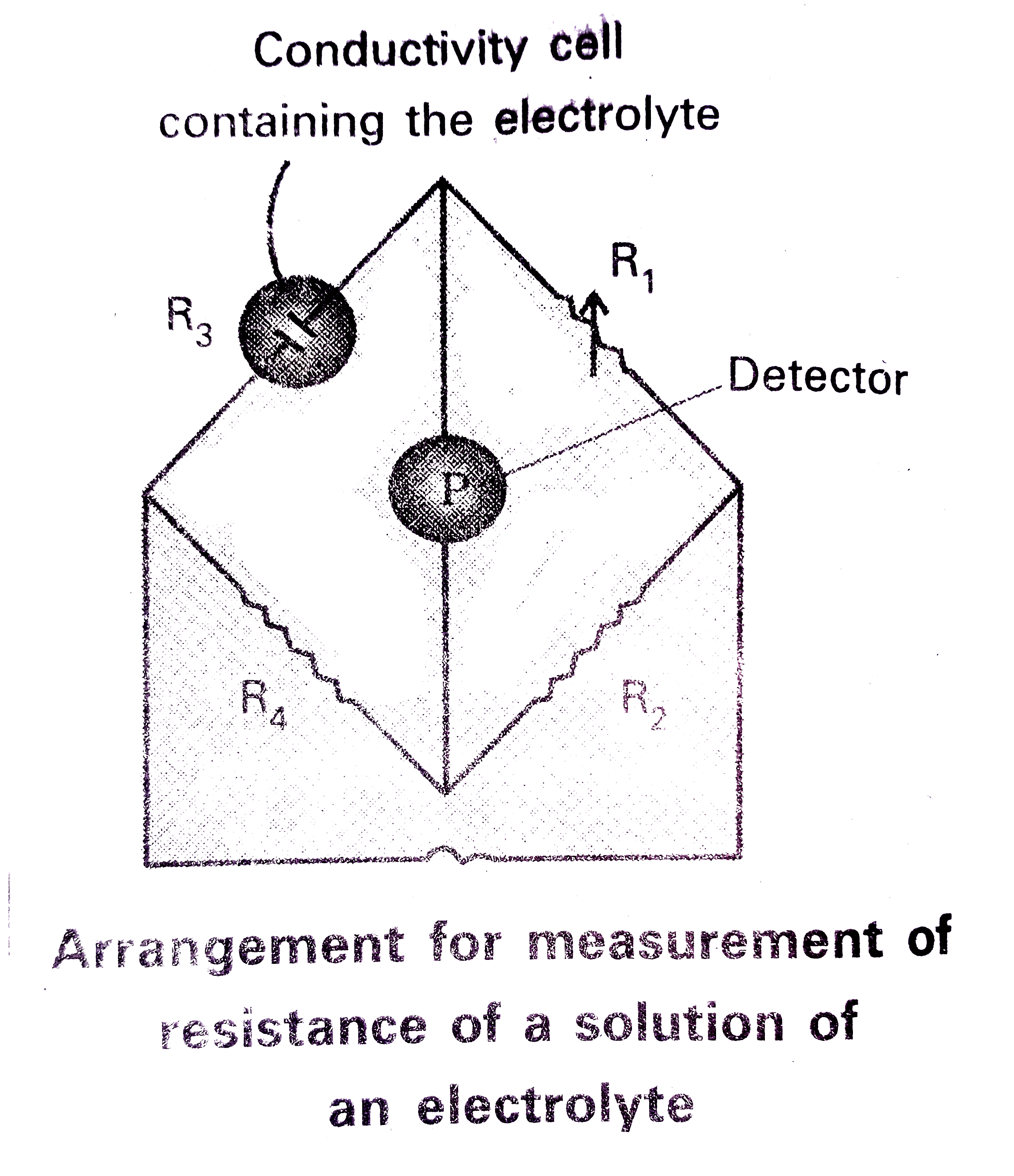InterviewSolution
Saved Bookmarks
| 1. |
What is electrical conductance of a solution ? How is it measured experimentally ? |
|
Answer» Solution :The reciprocal of resistance (R ) is known as conductane (c ) `l/R=k xx(l)/(l//A)` `c=k xx(l)/(l//A)` `to` The conductance or the current conducting capacity of an electrolytic solution can be expressed as i) Specific conductance (k), ii) Molar conductivity `(^^_(m))` i) Specific conductance : The conductance of the solution enclosed between two parallel electrodes of unit area of cross section separated by unit distance is CALLED specific conductance (k). ii) Molar conductivity `(^^_(m)):` The conductivity of a volume of solution containing one gram molecular weiht of the electrolyte placed between two parallel electrodes separated by a distance of unit length of 1 meter is called molar conductivity `(^^_(m))` Relation between conductivity and molar conductivity : `^^_(m) =k/c,therefore c=` CONSTANT Measurement of electrical conductance : `to` The resistance of a metallic wire can be measured with a WHEATSTONE bridge. `to` In measuring the resistance of an electrolytic solution tow problems are identified. i) On PASSING direct current (DC) through the solution charges the composition of the solution due to electrolysis. ii) A solution cannot be connected to the mmeasuring bridge like a metallic wire. ` to` ii) A solution cannot be connected to the measuring bridge like a metallic wire. `to` First proble solved by using AC instead of DC. `to` Second problem solved by using specilly designed vessel called conductivity cell.  By using above cells, Resistance `R=(l)/(k xxA)` l = distance between electrodes : A = Area of cross section, k = conductivity `l/A` = cell constant `=G^(**)` `therefore G^(**)=l/A =Rxxk` The cell constant `(G^(**))` is determinded by measuring the resistance of the cell containing a solution whose conductivity is already known `to` Cell constant once determined, used for measuring the resistance (or) conductivity. `to` The set up for the measurement of the resistance is shown in following figure. Unknown resistance `R_(2) =(R_(1)R_(4))/(R_(3))` Conductivity of solution `(k) =("Cell constant " (G^(**)))/(R)` Molar conductivity `^^_((m))=k/c =(k (S CM ^(-1)))/(1000(Lm^(-3))xx"Molarity (moles//lit)")` 
|
|